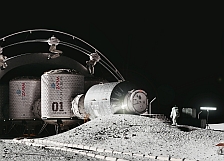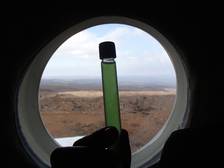SPACE EXPLORATION

On Earth, it is very normal that we do not think about where oxygen comes from: plants and cyanobacteria produce it via photosynthesis for about 2.3 billion years. For the realisation of long-term space missions, the availability of oxygen is key prerequisite. But how do we produce oxygen sustainably and efficiently over long periods of time? And how do we recycle carbon dioxide exhaled by astronauts? more...

Elon Musk’s red Tesla symbolizes a renewed enthusiasm for space: Humankind is on its way to Mars. Decades after the Apollo missions, we again have a rocket powerful enough to transport humans beyond low Earth orbit. And it’s not just American businessmen who pursue the dream of venturing deeper into space. Space agencies like Europe’s ESA with its Moon Village concept are hoping to land humans on the Moon in the next 20 years, and later even on Mars... more...

The LASM was created, primarily, to develop microbe-based technologies in support of future crewed outposts beyond Earth.
Sending humans to Mars within a few decades is now a realistic goal of leading entities of the space sector, be they public agencies or private companies. While first missions will likely be short-term, a permanently or semi-permanently inhabited outpost, akin to polar stations, would be desirable to perform extensive research activity on site. more...


 "
"